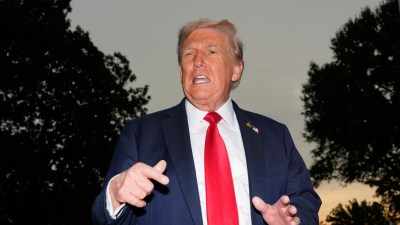Maya set to gain most from trifurcation
After the success of Sarv Samaj rhetoric — during the Uttar Pradesh Assembly elections in 2007 — that increased Bahujan Samaj Party’s...

After the success of Sarv Samaj rhetoric — during the Uttar Pradesh Assembly elections in 2007 — that increased Bahujan Samaj Party’s (BSP) vote share, Mayawati has started expanding beyond the state. To begin with, she is trying to move out to new states — her recent rally in Bhopal is an example — and, secondly, by mooting the idea of trifurcating UP, she hopes to have a political sway over more than one state. In a country where parties are popularly assessed as “national” according to the number of states they have a strong presence in, the trifurcation idea might just work for her.
All the four regions of present-day UP have a sizeable Dalit population with a uniform spread. The SC population in central UP, Bundelkhand, Poorvanchal and western UP are 26.1 per cent, 25.14 per cent, 21.15 per cent and 18.17 per cent, respectively. These are all higher than the national average of 16.2 per cent and three of these are higher than the 21.1 per cent SC population in the entire UP. Thus, if Mayawati gets her social combinations right, she has a fair chance in all the states formed after the possible trifurcation of UP.
In the Madhya Pradesh part of Bundelkhand region, Datia has MP’s highest SC population at 24.67 per cent. Interestingly, the BJP may be headed for a decline in MP’s Bundelkhand as its firebrand OBC leader Uma Bharati from Tikamgarh is out of the party.
Another important fact is that Mayawati’s lieutenant Naseemuddin Siddiqui is from Banda in Bundelkhand. So he is the natural choice for a possible Bundelkhand chief ministership. Siddiqui is also expected to attract Muslim vote, which right now stays primarily with Mulayam Singh Yadav’s Samajwadi Party (SP) in UP. This way, Mayawati can reward Siddiqui and damage SP at the same time.
Sociologist Vivek Kumar says if Siddiqui can be the Bundelkhand lieutenant, Satish Chandra Mishra can be the party’s Brahmin face in central UP, Ramveer Upadhyaya from Hathras can hold the combination in western UP. In the east, Indrajit Saroj, a Pasi, can attract the SC Pasi votes, and Sukhdev Rajbhar and Ram Achal Rajbhar can be the lower OBC faces.
Kumar does not see a Brahmin-Dalit combination beyond slogans. However, in UP, the BSP’s vote share has gone up from 23.19 per cent in 2002 to 30.46 per cent in 2007 in UP. Within this, the upper caste vote has gone up from 5 to 16 per cent, the non-Yadav OBC vote from 20 to 27 per cent and the Muslim vote from 10 to 17 per cent.
The SP with its Yadav-Muslim combine may be the biggest loser in the event of a trifurcation of the state. While the western region taken as a whole is the only one not having a powerful Yadav population, one belt — comprising Etah, Mainpuri and Etawah — at its eastern tip has a powerful Yadav population that is seen as a pocketborough of Mulayam Singh Yadav.
This means that one of Mulayam’s core areas may become part of Harit Pradesh that has a strong “Jat belt” further to the west.
This would divide the power balance in the smaller state, as the Jats are found in the western districts alone. The other strong Yadav belt will be left in Poorvanchal, but in most districts here Yadavs are 10 per cent of the population, much fewer than Dalits. This division of Mulayam’s core Yadav vote (8.7 per cent in undivided UP) may prompt Muslims to quit the SP, as their support for Mulayam was to keep the Bharatiya Janata Party (BJP) out. They would prefer a strong BSP to a weakened SP.
Till recently it was thought that Mayawati could never gain power on her own. Analysts said her core vote was insufficient for winning UP and that if she allied with other parties or castes, she would risk losing the core SC vote. What they missed was that she was on her way to reverse the famous rainbow coalition of the Congress wherein the predominantly upper caste leadership politically patronised individual Dalit leaders even though there was little social intercourse between the upper castes and the Dalits.
The present phase of Congress-BSP acrimony — she openly criticised the Congress in Bhopal and Jhansi recently — was just waiting to unfold, as both the parties see themselves as “national” claimants of the Dalit vote. The Congress is in this sense a bigger future rival for Mayawati than the BJP or the SP.



- 01
- 02
- 03
- 04
- 05




























